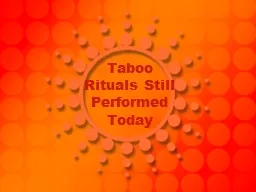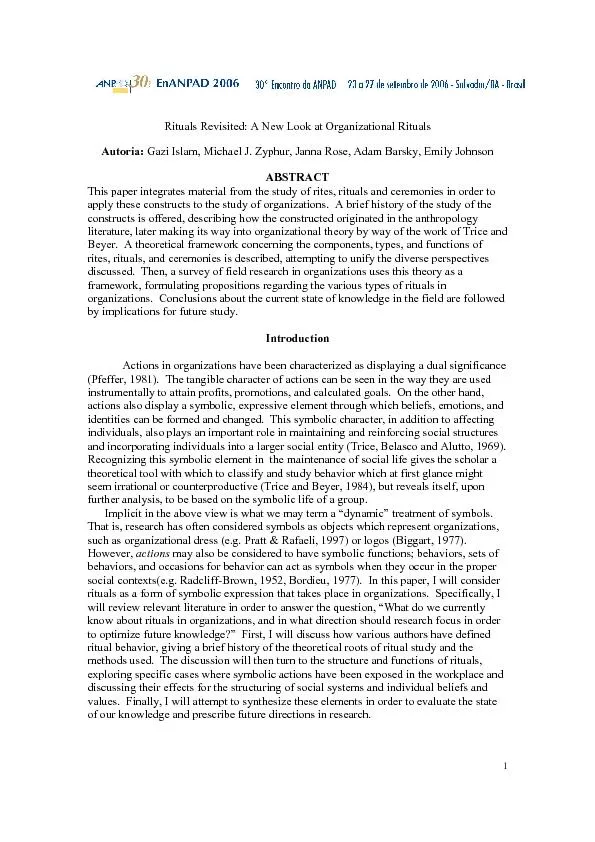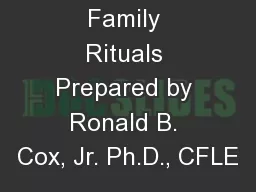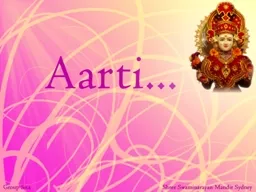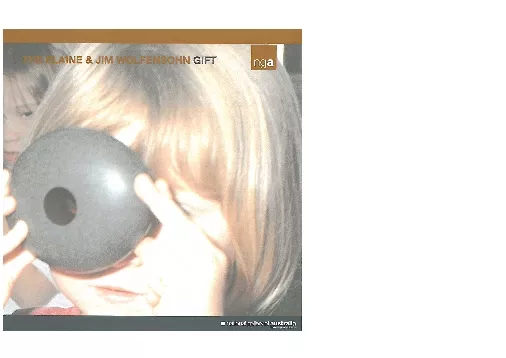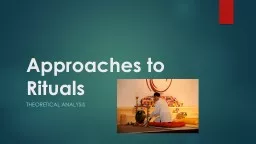PPT-Taboo Rituals Still Performed Today
Author : calandra-battersby | Published Date : 2018-09-30
What one may view as strange may be very meaningful in another culture While some rituals can involve something as simple as a silent individual prayer othersespecially
Presentation Embed Code
Download Presentation
Download Presentation The PPT/PDF document "Taboo Rituals Still Performed Today" is the property of its rightful owner. Permission is granted to download and print the materials on this website for personal, non-commercial use only, and to display it on your personal computer provided you do not modify the materials and that you retain all copyright notices contained in the materials. By downloading content from our website, you accept the terms of this agreement.
Taboo Rituals Still Performed Today: Transcript
Download Rules Of Document
"Taboo Rituals Still Performed Today"The content belongs to its owner. You may download and print it for personal use, without modification, and keep all copyright notices. By downloading, you agree to these terms.
Related Documents

